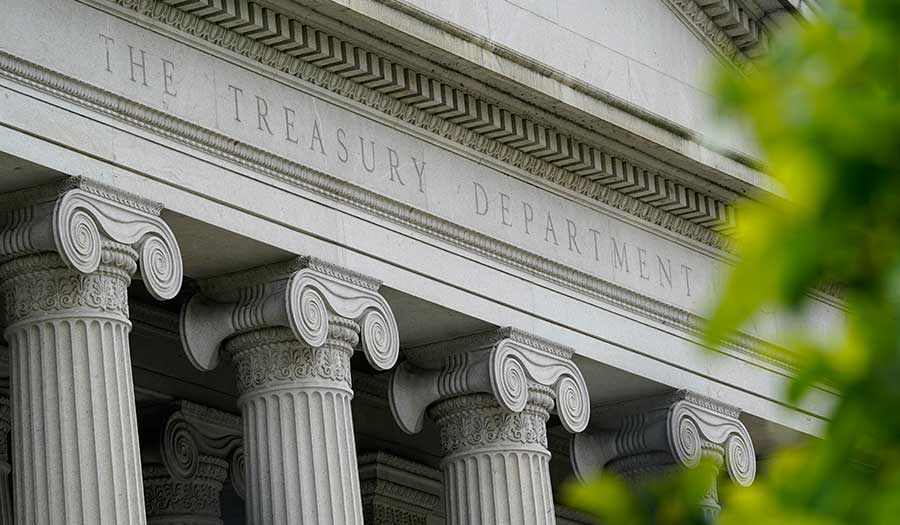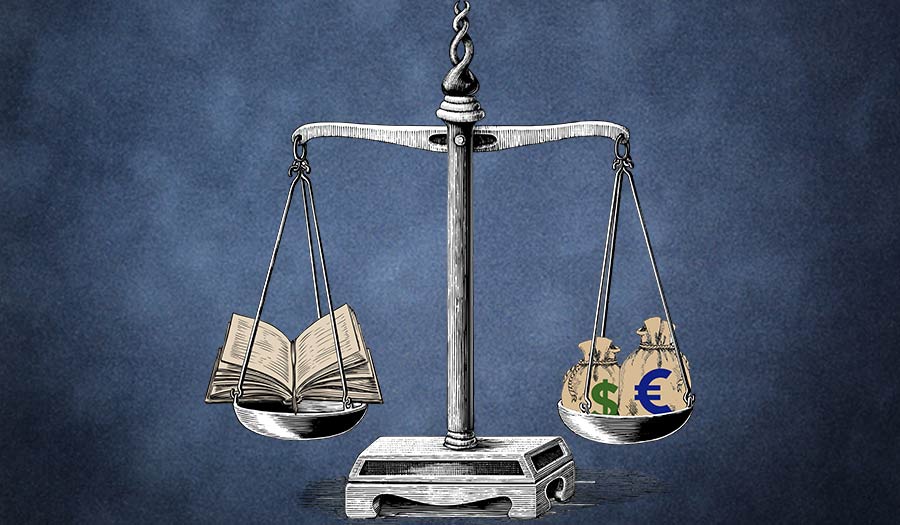 AP/Patrick Semansky
AP/Patrick Semansky
World News Desk
Learn the why behind the headlines.
Subscribe to the Real Truth for FREE news and analysis.
Subscribe NowWASHINGTON (AP) – The federal government’s gross national debt has surpassed $34 trillion, a record high that foreshadows the coming political and economic challenges to improve America’s balance sheet in the coming years.
The U.S. Treasury Department issued a report Tuesday logging U.S. finances, which have become a source of tension in a politically divided Washington that could possibly see parts of the government shutdown without an annual budget in place.
Republican lawmakers and the White House agreed last June to temporarily lift the nation’s debt limit, staving off the risk of what would be a historic default. That agreement lasts until January 2025. Here are some answers to questions about the new record national debt.
How Did the National Debt Hit $34 Trillion?
The national debt eclipsed $34 trillion several years sooner than pre-pandemic projections. The Congressional Budget Office’s January 2020 projections had gross federal debt eclipsing $34 trillion in fiscal year 2029.
But the debt grew faster than expected because of a multi-year pandemic starting in 2020 that shut down much of the U.S. economy. The government borrowed heavily under then President Donald Trump and current President Joe Biden to stabilize the economy and support a recovery. But the rebound came with a surge of inflation that pushed up interest rates and made it more expensive for the government to service its debts.
“So far, Washington has been spending money as if we had unlimited resources,” said Sung Won Sohn, an economics professor at Loyola Marymount University. “But the bottom line is there is no free lunch,” he said, “and I think the outlook is pretty grim.”
The gross debt includes money that the government owes itself, so most policymakers rely on the total debt held by the public in assessing the government’s finances. This lower figure—$26.9 trillion—is roughly equal in size to the U.S. gross domestic product.
Last June, the Congressional Budget Office estimated in its 30-year outlook that publicly held debt will be equal to a record 181 percent of American economic activity by 2053.
What Is the Impact to the Economy?
The national debt does not appear to be a weight on the U.S. economy right now, as investors are willing to lend the federal government money. This lending allows the government to keep spending on programs without having to raise taxes.
But the debt’s path in the decades to come might put at risk national security and major programs, including Social Security and Medicare, which have become the most prominent drivers of forecasted government spending over the next few decades. Government dysfunction, such as another debt limit showdown, could also be a financial risk if investors worry about lawmakers’ willingness to repay the U.S. debt.
Foreign buyers of U.S. debt—like China, Japan, South Korea and European nations—have already cut down on their holdings of Treasury notes.
A Peterson Foundation analysis states that foreign holdings of U.S. debt peaked at 49 percent in 2011, but dropped to 30 percent by the end of 2022.
“Looking ahead, debt will continue to skyrocket as the Treasury expects to borrow nearly $1 trillion more by the end of March,” said Peterson Foundation CEO Michael Peterson. “Adding trillion after trillion in debt, year after year, should be a flashing red warning sign to any policymaker who cares about the future of our country.”
How Could It Affect Me?
The debt equates to about $100,000 per person in the U.S. That sounds like a lot, but the sum so far has not appeared to threaten U.S. economic growth.
Instead, the risk is long-term if the debt keeps rising to uncharted levels. Mr. Sohn said a higher debt load could put upward pressure on inflation and cause interest rates to remain elevated, which could also increase the cost of repaying the national debt.
And as the debt challenge evolves over time, choices may become more severe as the costs of Social Security, Medicare and Medicaid increasingly outstrip tax revenues.
When it could turn into a more dire situation, is anyone’s guess, says Shai Akabas, director of economic policy at the Bipartisan Policy Center, “but if and when that happens, it could mean very significant consequences that occur very quickly.”
“It could mean spikes in interest rates, it could mean a recession that leads to lots more unemployment. It could lead to another bout of inflation or weird going[s] on with consumer prices—several of which are things that we’ve experienced just in the past few years,” he said.
How Do Republicans and Democrats Differ?
Both Democrats and Republicans have called for debt reduction, but they disagree on the appropriate means of doing so.
The Biden administration has been pushing for tax hikes on the wealthy and corporations to reduce budget deficits, in addition to funding its domestic agenda. Mr. Biden also increased the budget for the IRS, so that it can collect unpaid taxes and possibly reduce the debt by hundreds of billions of dollars over 10 years.
Republican lawmakers have called for large cuts to non-defense government programs and the repeal of clean energy tax credits and spending passed in the Inflation Reduction Act. But Republicans also want to trim Mr. Biden’s IRS funding and cut taxes further, both of which could cause the debt to worsen.
Both claims are previews of cases that will likely be put to voters in this year’s presidential election.
White House spokesman Michael Kikukawa put the blame on the GOP, saying in a statement that the steady accrual over years was “trickle-down debt—driven overwhelmingly by repeated Republican giveaways skewed to big corporations and the wealthy.”
By contrast, Republican lawmakers have said that borrowing during the Biden administration contributed to the 2022 spike in inflation rates that dragged down the Democratic president’s approval ratings.
Mr. Akabas said, “There is growing concern among investors and rating agencies that the trajectory we’re on is unsustainable—when that turns into a more dire situation is anyone’s guess.”
- Real Truth Magazine Articles
- ECONOMY & PERSONAL FINANCE
 7 Old Testament Laws That Would Fix the Global Economy
7 Old Testament Laws That Would Fix the Global Economy
More on Related Topics:
- 10 Tips from Experts to Help You Change Your Relationship with Money in 2025
- Europe’s Economy Needs Help. Political Chaos in France and Germany Means It May Be Slower in Coming
- Buy Now, Pay Later Is More Popular Than Ever. It Can Cost More Than You Think
- When the Dollar Store Closes, U.S. Families on Food Benefits Lose a Lifeline
- Its Economy and Infrastructure Battered, Can Lebanon Afford a War with Israel?


